https://mil.news.sina.com.cn/world/2019-06-16/doc-ihvhiqay6039712.shtml
印海军“鲉鱼”级潜艇二号舰出现重大缺陷 惨遭退货
印海军“鲉鱼”级潜艇二号舰出现重大缺陷 惨遭退货
22
据印度商业标准网站报道,印度从法国引进技术生产的“鲉鱼”级常规潜艇二号舰出现重大缺陷,印度海军甚至拒绝该舰服役,并要求造船厂对其暴露出的重大缺陷进行修改。
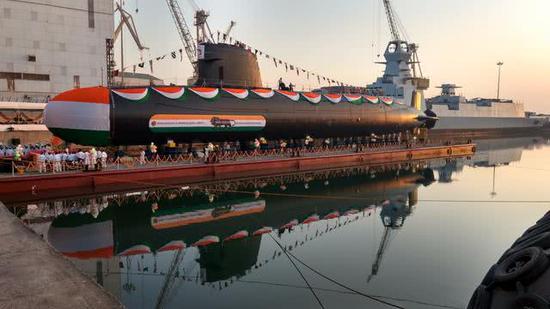 “卡汉德里”下水时的照片
“卡汉德里”下水时的照片
据报道,印度在2005年与法国DCNS集团(现为“海军集团”)签署协议,以近40亿美元的总价采购6艘法国“鲉鱼”级常规潜艇。印度在采购该型潜艇过程中不仅仅是要获得装备,更是想要掌握法国先进潜艇的建造技术,因此该型潜艇的引进包括一部分技术转让。据报道6艘潜艇的建造工作全部由印度本土的马扎冈船坞有限公司负责。目前第一艘“虎鲨”号已在2018年12月服役;第二艘和第三艘分别被命名为“卡汉德里”号和“卡兰杰”号,目前正处于服役前的最后测试阶段。印度媒体称正是“卡汉德里”号试航阶段暴露的问题最终让印度海军忍无可忍拒绝让该舰服役。
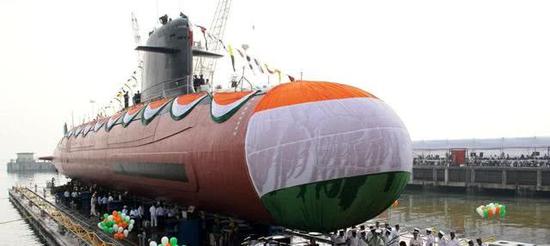
据印度媒体报道,印度海军的鲉鱼级潜艇二号舰“卡汉德里”在试航中暴露出了一系列重大缺陷。而此次正是在测试阶段暴露的缺陷,让印度海军不得不拒绝“卡汉德里”正式服役,直到其所有缺陷和缺陷得到彻底改善。据报道“卡汉德里”出现的一个致命缺陷是:它的发动机和螺旋桨发出的噪音过高。据报道潜艇最重要的属性就是低噪音。这使得潜艇可以躲过敌方的声呐搜索,而一旦噪音过高导致潜艇很容易被敌方发现。
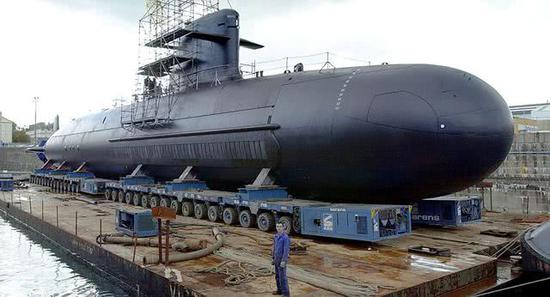
除此之外印度商业标准网站报道还称,噪音过大并不是“卡汉德里”号的唯一缺陷。印度海军还提出了其他35个缺陷,并要求在潜艇服役前予以修改。而修改完成后其中29个问题需要在海洋绝对平静时进行试验。但是由于季风即将来临,平静的海面在9月之前不太可能出现,因此测试将在9月之后进行,这意味着“卡汉德里”号的服役至少要等到今年9月之后。而另外四个问题要求潜艇停靠在船坞进行测试。这与造船厂已经发布的现有停靠计划相冲突,该停靠计划涉及许多其他军舰,可能会对其他军舰的维修计划产生不利影响。
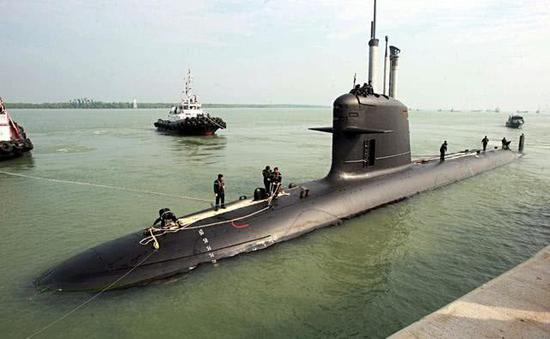
雪上加霜的印度海军的第三艘鲉鱼级潜艇“卡兰杰”号目前正在测试,目前还不清楚是否会有和“卡汉德里”号一样多的问题。印度海军和马扎冈船坞有限公司均拒绝就此事置评。然而,双方都不否认“卡汉德里”号潜艇确实存在诸多缺陷。一位印度海军高级军官表示:“提供功能齐全的潜艇是海军集团的责任。如果我们接受有缺陷的船,那么责任将在我们身上”。
The Indian Navy "Squid" class submarine No. 2 ship has a major defect.
The Indian Navy "Squid" class submarine No. 2 ship has a major defect.
twenty two
According to the Indian Business Standards website, India introduced a technically produced "Squid" class conventional submarine No. 2 ship with major defects. The Indian Navy even refused to serve the ship and required the shipyard to modify the major defects it exposed.
Photograph of "Kahandri" when the water was launched
According to reports, India signed an agreement with the French DCNS Group (now the “Naval Group”) in 2005 to purchase six French “salmon” class conventional submarines for a total price of nearly US$4 billion. In the process of purchasing this type of submarine, India not only needs to obtain equipment, but also wants to master the construction technology of French advanced submarines. Therefore, the introduction of this type of submarine includes some technology transfer. It is reported that the construction of the six submarines is all handled by Mazagon Dockyard Co., Ltd. in India. At present, the first "Tiger Shark" has been in service in December 2018; the second and third vessels are named "Kahandri" and "Kalanjie" respectively, and are currently in the final test before serving. stage. The Indian media claimed that it was the problem exposed during the trial phase of the Kahandri that eventually allowed the Indian Navy to refuse to allow the ship to serve.
According to Indian media reports, the Indian Navy's squid-class submarine No. 2 "Kahandri" exposed a series of major flaws in the trial. This time, it was the defects exposed during the test phase that the Indian Navy had to refuse to officially serve in the "Kahandri" until all its defects and defects were completely improved. A fatal flaw reported by "Kahandri" is that its engine and propellers are too noisy. The most important attribute of the submarine is reported to be low noise. This allows the submarine to escape the enemy's sonar search, and once the noise is too high, the submarine is easily found by the enemy.
In addition, the Indian Business Standards website reported that the excessive noise is not the only defect of the “Kahandri”. The Indian Navy also proposed 35 other defects and requested modifications before the submarine was commissioned. After the revision, 29 of the questions need to be tested when the ocean is absolutely calm. But as the monsoon is approaching, the calm sea is unlikely to occur until September, so the test will be carried out after September, which means that the service of the "Kahandri" will have to wait at least after September this year. The other four questions require the submarine to dock at the dock for testing. This conflicts with existing docking plans already issued by the shipyard, which involves many other warships and may adversely affect the maintenance schedules of other warships.
The third squid-class submarine of the Indian Navy, the Calange, is currently being tested, and it is unclear whether there will be as many problems as the Kahandri. Both the Indian Navy and Mazagan Dock Co., Ltd. declined to comment on the matter. However, neither side denied that the "Kahandri" submarine did have many defects. A senior Indian Navy officer said: "It is the responsibility of the Navy Group to provide a fully functional submarine. If we accept a defective ship, then the responsibility will be on us."
https://www.business-standard.com/a...ne-one-more-year-of-delay-119061500098_1.html
Navy finds defects in Scorpene submarine; one more year of delay
The navy has refused to commission the Khanderi into service until all its defects and deficiencies are fully rectified
Ajai Shukla | New Delhi Last Updated at June 15, 2019 03:16 IST




AddThis Sharing Buttons
Share to Facebook
301Share to TwitterShare to LinkedInShare to More
11
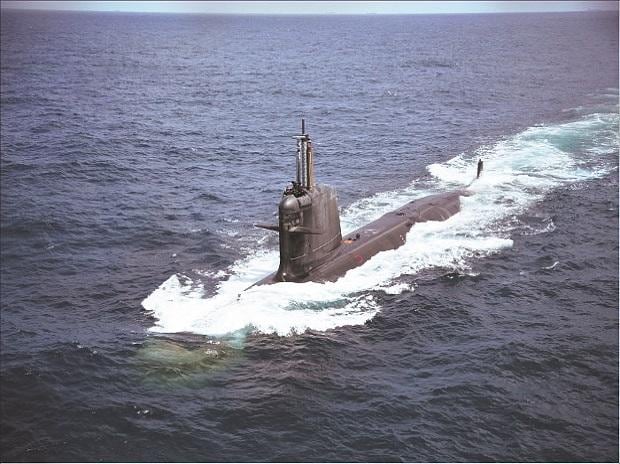
The navy has refused to commission the Khanderi into service until all its defects and deficiencies are rectified
Project-75, which involves building six Scorpene submarines in Mazagon Dock (MDL), Mumbai, had already been running five years late by the time the first one, INS Kalvari, was commissioned on December 14, 2017. With the navy reporting a host of problems in the second vessel, INS Khanderi, the project has now slipped by at least one more year. The navy has refused to commission the Khanderi into service until all its defects and deficiencies are fully rectified.
The defence ministry has fully supported the navy’s insistence that MDL and its technology partner, French warship builder Naval Group, deliver a fully seaworthy and battle-worthy vessel. “The liability of delivering a fully functional submarine is that of Naval Group. If we accept the boat with shortcomings, the liability would be on us,” said a senior admiral.
The most worrying problem the navy discovered during the Khanderi’s sea trials was a killer defect for a submarine: Its engines and propellers were emitting an unduly high level of noise.
A submarine’s effectiveness in battle, and its very survival, depends upon it remaining undetected. Enemy sonar detectors — mounted on aircraft, warships and submarines — search relentlessly for sounds emitted by enemy submarines. Once detected, a submarine is easy meat for enemy depth charges or torpedoes.
The Khanderi’s noisiness is not its only problem; the navy has pointed out 35 other defects and has demanded they be rectified before it commissions the vessel. Nor can these problems be addressed quickly, since 29 of them require to be tested when the sea is absolutely calm — or in what is termed “Sea State — 1”. With the monsoon imminent, calm seas are unlikely before September.
Another four issues require the submarine be docked in a navy dockyard for testing. This runs up against an existing docking schedule that dockyards have already issued, involving numerous other warships.
Meanwhile, the third Project-75 submarine, INS Karanj, has just begun trials. It is unclear whether there will be as many problems as with the Khanderi. The Indian Navy and MDL both declined to comment on the matter. However, neither of the two denied the existence of numerous defects in the Khanderi.
For the navy, which is making do with just 14 conventional submarines against a requirement of 24, the INS Khanderi delay extends a dangerous operational void.
Over recent years, both the navy’s nuclear submarines, the indigenous INS Arihant and the Russia-leased INS Chakra, have been out of action for extended spells after accidents.
Project 75 kicked off in 2005, when the navy signed a Rs 18,798 crore contract for MDL to build six conventional submarines, with technology transferred by Franco-Spanish consortium Armaris. All six Scorpenes were to be delivered between 2012-2015, but the sixth will only be delivered now by 2022.
Meanwhile, Armaris was taken over by France’s Direction des Constructions Navales Services (DCNS), and its cost went up to Rs 23,562 crore. In 2017, DCNS changed its name to Naval Group.
Besides INS Kalvari, the navy’s 14 conventional submarines include four 20-30 year-old, German-origin HDW 877 EKM boats (called the Sindhughosh-class); and nine 10-20 year-old, Russian-origin Kilo class Type 209 vessels (called the Shishumar class).
In addition to five more Scorpenes, six more conventional submarines are planned to be built under Project 75-I, by an Indian firm in partnership with a foreign vendor. Tendering for that is still to begin
First Published: Sat, June 15 2019. 03:13 IST
https://www.ibtimes.co.in/serious-defects-india-navys-scorpene-submarines-project-get-delayed-799644
Serious defects in India Navy's Scorpene submarines, project to get delayed
These defects can't be addressed quickly as the tests can only be conducted in the calm sea or as described by the Navy "Sea State — 1".
By : Ashish Shukla
Jun 15, 2019 17:04 IST
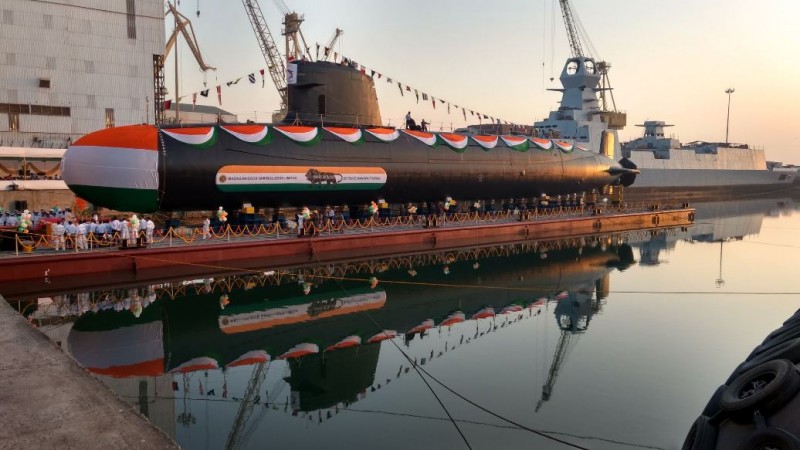
INS Khanderi, second Project 75 submarine was launched by the Indian Navy.Twitter/indiannavy
India's ambitious Project-75 which involves the manufacturing of Scorpene submarines in Mazagon Dock (MDL), Mumbai, is expected to get further delayed as the Indian Navy has identified serious problems in the second vessel, INS Khanderi. The first vessel in the project, INS Kalvari was commissioned in navy on December 14, 2017. The project includes the commissioning of INS Khanderi, is already running late by over 5 years is further expected to delayed by a year due to the latest problem identified by the navy. The vessel will not be commissioned into the Navy unless the defects and deficiencies are fully rectified, the Navy has clarified.
As per a report published in Business Standard, the Ministry of Defence is fully supporting the Navy's argument that MDL and its technology partner, French warship builder Naval Group deliver a fully functional and defect free vessel. A senior naval official reiterated "The liability of delivering a fully functional submarine is that of Naval Group. If we accept the boat with shortcomings, the liability would be on us."
The biggest issue which the Indian Navy has detected in INS Kahnderi is the unduly high level of noise by its engines and propellers. An element of surprise is the major criteria for a submarine to deliver a deadly blow during wartime. To detect such sounds, generally, the navies mount sonar detectors on aircraft, warships, and submarines to look for sounds emitted by enemy submarines. Once detected a submarine could become easy prey to the enemy torpedo.

INS KalvariTwitter
Shockingly, it is not the only problem which INS Khanderi is facing, the Navy has highlighted 35 other defects which could cause severe damage during wartime. Further, these defects can't be addressed quickly as the tests can only be conducted in the calm sea or as described by the Navy "Sea State — 1". Under the Project -75, MDL will manufacture six Scorpene class submarines, the next generation diesel submarines for Indian Navy under technology transfer from Naval Group of France. The $3.75 billion worth deal was signed way back in 2005. The induction of all submarines is expected to be completed by 2020 but with multiple technical issues, the project is running late by over 5 years.
印海军“鲉鱼”级潜艇二号舰出现重大缺陷 惨遭退货
印海军“鲉鱼”级潜艇二号舰出现重大缺陷 惨遭退货
22
据印度商业标准网站报道,印度从法国引进技术生产的“鲉鱼”级常规潜艇二号舰出现重大缺陷,印度海军甚至拒绝该舰服役,并要求造船厂对其暴露出的重大缺陷进行修改。

据报道,印度在2005年与法国DCNS集团(现为“海军集团”)签署协议,以近40亿美元的总价采购6艘法国“鲉鱼”级常规潜艇。印度在采购该型潜艇过程中不仅仅是要获得装备,更是想要掌握法国先进潜艇的建造技术,因此该型潜艇的引进包括一部分技术转让。据报道6艘潜艇的建造工作全部由印度本土的马扎冈船坞有限公司负责。目前第一艘“虎鲨”号已在2018年12月服役;第二艘和第三艘分别被命名为“卡汉德里”号和“卡兰杰”号,目前正处于服役前的最后测试阶段。印度媒体称正是“卡汉德里”号试航阶段暴露的问题最终让印度海军忍无可忍拒绝让该舰服役。

据印度媒体报道,印度海军的鲉鱼级潜艇二号舰“卡汉德里”在试航中暴露出了一系列重大缺陷。而此次正是在测试阶段暴露的缺陷,让印度海军不得不拒绝“卡汉德里”正式服役,直到其所有缺陷和缺陷得到彻底改善。据报道“卡汉德里”出现的一个致命缺陷是:它的发动机和螺旋桨发出的噪音过高。据报道潜艇最重要的属性就是低噪音。这使得潜艇可以躲过敌方的声呐搜索,而一旦噪音过高导致潜艇很容易被敌方发现。

除此之外印度商业标准网站报道还称,噪音过大并不是“卡汉德里”号的唯一缺陷。印度海军还提出了其他35个缺陷,并要求在潜艇服役前予以修改。而修改完成后其中29个问题需要在海洋绝对平静时进行试验。但是由于季风即将来临,平静的海面在9月之前不太可能出现,因此测试将在9月之后进行,这意味着“卡汉德里”号的服役至少要等到今年9月之后。而另外四个问题要求潜艇停靠在船坞进行测试。这与造船厂已经发布的现有停靠计划相冲突,该停靠计划涉及许多其他军舰,可能会对其他军舰的维修计划产生不利影响。

雪上加霜的印度海军的第三艘鲉鱼级潜艇“卡兰杰”号目前正在测试,目前还不清楚是否会有和“卡汉德里”号一样多的问题。印度海军和马扎冈船坞有限公司均拒绝就此事置评。然而,双方都不否认“卡汉德里”号潜艇确实存在诸多缺陷。一位印度海军高级军官表示:“提供功能齐全的潜艇是海军集团的责任。如果我们接受有缺陷的船,那么责任将在我们身上”。
The Indian Navy "Squid" class submarine No. 2 ship has a major defect.
The Indian Navy "Squid" class submarine No. 2 ship has a major defect.
twenty two
According to the Indian Business Standards website, India introduced a technically produced "Squid" class conventional submarine No. 2 ship with major defects. The Indian Navy even refused to serve the ship and required the shipyard to modify the major defects it exposed.
Photograph of "Kahandri" when the water was launched
According to reports, India signed an agreement with the French DCNS Group (now the “Naval Group”) in 2005 to purchase six French “salmon” class conventional submarines for a total price of nearly US$4 billion. In the process of purchasing this type of submarine, India not only needs to obtain equipment, but also wants to master the construction technology of French advanced submarines. Therefore, the introduction of this type of submarine includes some technology transfer. It is reported that the construction of the six submarines is all handled by Mazagon Dockyard Co., Ltd. in India. At present, the first "Tiger Shark" has been in service in December 2018; the second and third vessels are named "Kahandri" and "Kalanjie" respectively, and are currently in the final test before serving. stage. The Indian media claimed that it was the problem exposed during the trial phase of the Kahandri that eventually allowed the Indian Navy to refuse to allow the ship to serve.
According to Indian media reports, the Indian Navy's squid-class submarine No. 2 "Kahandri" exposed a series of major flaws in the trial. This time, it was the defects exposed during the test phase that the Indian Navy had to refuse to officially serve in the "Kahandri" until all its defects and defects were completely improved. A fatal flaw reported by "Kahandri" is that its engine and propellers are too noisy. The most important attribute of the submarine is reported to be low noise. This allows the submarine to escape the enemy's sonar search, and once the noise is too high, the submarine is easily found by the enemy.
In addition, the Indian Business Standards website reported that the excessive noise is not the only defect of the “Kahandri”. The Indian Navy also proposed 35 other defects and requested modifications before the submarine was commissioned. After the revision, 29 of the questions need to be tested when the ocean is absolutely calm. But as the monsoon is approaching, the calm sea is unlikely to occur until September, so the test will be carried out after September, which means that the service of the "Kahandri" will have to wait at least after September this year. The other four questions require the submarine to dock at the dock for testing. This conflicts with existing docking plans already issued by the shipyard, which involves many other warships and may adversely affect the maintenance schedules of other warships.
The third squid-class submarine of the Indian Navy, the Calange, is currently being tested, and it is unclear whether there will be as many problems as the Kahandri. Both the Indian Navy and Mazagan Dock Co., Ltd. declined to comment on the matter. However, neither side denied that the "Kahandri" submarine did have many defects. A senior Indian Navy officer said: "It is the responsibility of the Navy Group to provide a fully functional submarine. If we accept a defective ship, then the responsibility will be on us."
https://www.business-standard.com/a...ne-one-more-year-of-delay-119061500098_1.html
Navy finds defects in Scorpene submarine; one more year of delay
The navy has refused to commission the Khanderi into service until all its defects and deficiencies are fully rectified
Ajai Shukla | New Delhi Last Updated at June 15, 2019 03:16 IST



AddThis Sharing Buttons
Share to Facebook
301Share to TwitterShare to LinkedInShare to More
11

The navy has refused to commission the Khanderi into service until all its defects and deficiencies are rectified
- ALSO READ
INS Vela: Late and over-budget, fourth Scorpene submarine enters water
Indian Navy signs 10-year lease for third Russian nuclear-submarine
Indian Navy rejects Pak claim of detecting submarine, calls it 'propaganda'
Budgetary woes put India's supercarrier 'INS Vishal' on hold
Two Indian naval ships take part in China's biggest fleet review
-
Project-75, which involves building six Scorpene submarines in Mazagon Dock (MDL), Mumbai, had already been running five years late by the time the first one, INS Kalvari, was commissioned on December 14, 2017. With the navy reporting a host of problems in the second vessel, INS Khanderi, the project has now slipped by at least one more year. The navy has refused to commission the Khanderi into service until all its defects and deficiencies are fully rectified.
The defence ministry has fully supported the navy’s insistence that MDL and its technology partner, French warship builder Naval Group, deliver a fully seaworthy and battle-worthy vessel. “The liability of delivering a fully functional submarine is that of Naval Group. If we accept the boat with shortcomings, the liability would be on us,” said a senior admiral.
The most worrying problem the navy discovered during the Khanderi’s sea trials was a killer defect for a submarine: Its engines and propellers were emitting an unduly high level of noise.
A submarine’s effectiveness in battle, and its very survival, depends upon it remaining undetected. Enemy sonar detectors — mounted on aircraft, warships and submarines — search relentlessly for sounds emitted by enemy submarines. Once detected, a submarine is easy meat for enemy depth charges or torpedoes.
The Khanderi’s noisiness is not its only problem; the navy has pointed out 35 other defects and has demanded they be rectified before it commissions the vessel. Nor can these problems be addressed quickly, since 29 of them require to be tested when the sea is absolutely calm — or in what is termed “Sea State — 1”. With the monsoon imminent, calm seas are unlikely before September.
Another four issues require the submarine be docked in a navy dockyard for testing. This runs up against an existing docking schedule that dockyards have already issued, involving numerous other warships.
Meanwhile, the third Project-75 submarine, INS Karanj, has just begun trials. It is unclear whether there will be as many problems as with the Khanderi. The Indian Navy and MDL both declined to comment on the matter. However, neither of the two denied the existence of numerous defects in the Khanderi.
For the navy, which is making do with just 14 conventional submarines against a requirement of 24, the INS Khanderi delay extends a dangerous operational void.
Over recent years, both the navy’s nuclear submarines, the indigenous INS Arihant and the Russia-leased INS Chakra, have been out of action for extended spells after accidents.
Project 75 kicked off in 2005, when the navy signed a Rs 18,798 crore contract for MDL to build six conventional submarines, with technology transferred by Franco-Spanish consortium Armaris. All six Scorpenes were to be delivered between 2012-2015, but the sixth will only be delivered now by 2022.
Meanwhile, Armaris was taken over by France’s Direction des Constructions Navales Services (DCNS), and its cost went up to Rs 23,562 crore. In 2017, DCNS changed its name to Naval Group.
Besides INS Kalvari, the navy’s 14 conventional submarines include four 20-30 year-old, German-origin HDW 877 EKM boats (called the Sindhughosh-class); and nine 10-20 year-old, Russian-origin Kilo class Type 209 vessels (called the Shishumar class).
In addition to five more Scorpenes, six more conventional submarines are planned to be built under Project 75-I, by an Indian firm in partnership with a foreign vendor. Tendering for that is still to begin
First Published: Sat, June 15 2019. 03:13 IST
https://www.ibtimes.co.in/serious-defects-india-navys-scorpene-submarines-project-get-delayed-799644
Serious defects in India Navy's Scorpene submarines, project to get delayed
These defects can't be addressed quickly as the tests can only be conducted in the calm sea or as described by the Navy "Sea State — 1".
By : Ashish Shukla
Jun 15, 2019 17:04 IST

INS Khanderi, second Project 75 submarine was launched by the Indian Navy.Twitter/indiannavy
India's ambitious Project-75 which involves the manufacturing of Scorpene submarines in Mazagon Dock (MDL), Mumbai, is expected to get further delayed as the Indian Navy has identified serious problems in the second vessel, INS Khanderi. The first vessel in the project, INS Kalvari was commissioned in navy on December 14, 2017. The project includes the commissioning of INS Khanderi, is already running late by over 5 years is further expected to delayed by a year due to the latest problem identified by the navy. The vessel will not be commissioned into the Navy unless the defects and deficiencies are fully rectified, the Navy has clarified.
As per a report published in Business Standard, the Ministry of Defence is fully supporting the Navy's argument that MDL and its technology partner, French warship builder Naval Group deliver a fully functional and defect free vessel. A senior naval official reiterated "The liability of delivering a fully functional submarine is that of Naval Group. If we accept the boat with shortcomings, the liability would be on us."
The biggest issue which the Indian Navy has detected in INS Kahnderi is the unduly high level of noise by its engines and propellers. An element of surprise is the major criteria for a submarine to deliver a deadly blow during wartime. To detect such sounds, generally, the navies mount sonar detectors on aircraft, warships, and submarines to look for sounds emitted by enemy submarines. Once detected a submarine could become easy prey to the enemy torpedo.

INS KalvariTwitter
Shockingly, it is not the only problem which INS Khanderi is facing, the Navy has highlighted 35 other defects which could cause severe damage during wartime. Further, these defects can't be addressed quickly as the tests can only be conducted in the calm sea or as described by the Navy "Sea State — 1". Under the Project -75, MDL will manufacture six Scorpene class submarines, the next generation diesel submarines for Indian Navy under technology transfer from Naval Group of France. The $3.75 billion worth deal was signed way back in 2005. The induction of all submarines is expected to be completed by 2020 but with multiple technical issues, the project is running late by over 5 years.
